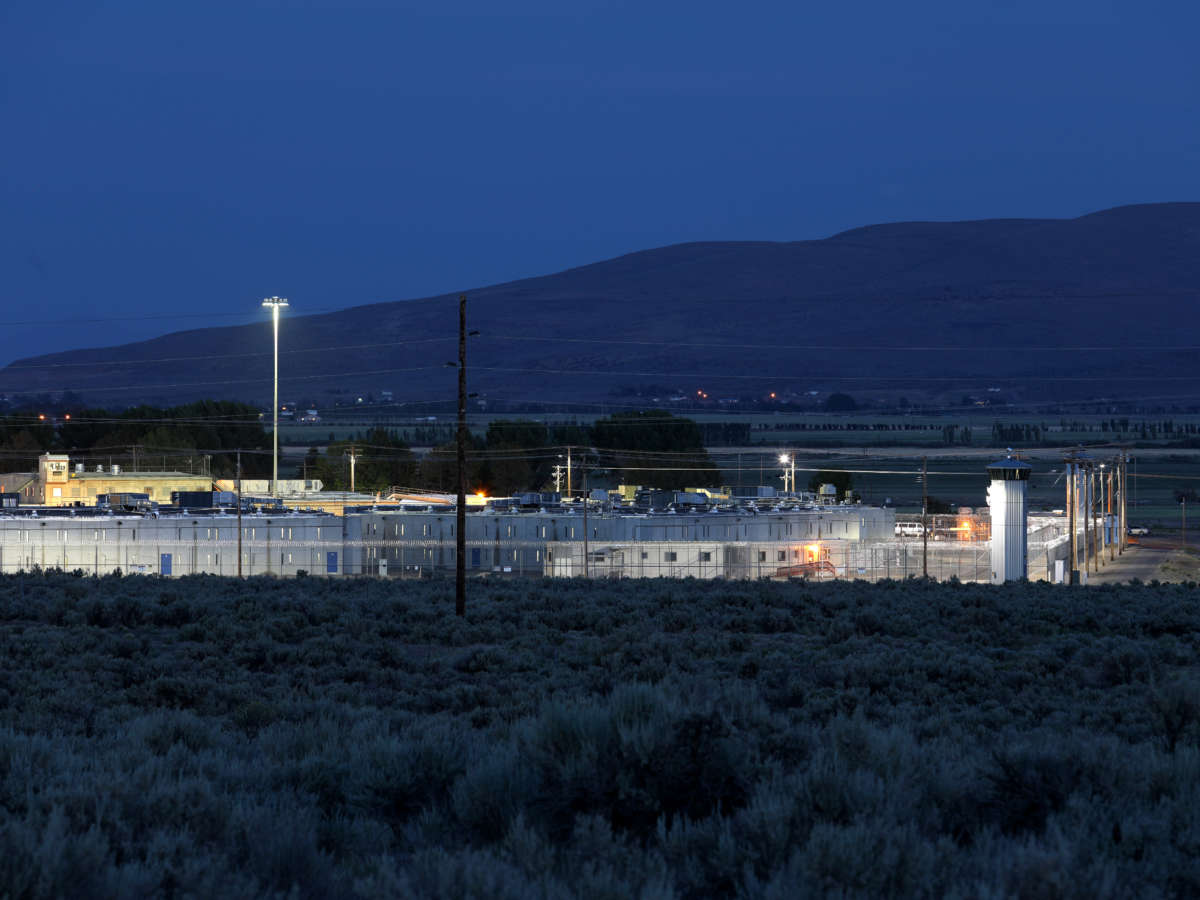When a prison closes, mainstream reporting often obscures the truth from public view. This has certainly been the case for the planned closure of California Correctional Center (CCC) in Susanville. Articles tend to focus on what’s going on in the minds of local people who have sued the state to stop the prison from closing at the end of June. It seems that some Susanville residents believe that propping up their economy through the caging of human beings — like the two of us, who are incarcerated in CCC — is justifiable.
Many of the free residents of Susanville feel victimized, stories in The New York Times and The San Francisco Chronicle tell us. They think that prison closure is “punishment” by Gov. Gavin Newsom for their conservative politics. In reality, when a prison closes, the town where it sits has a chance at redemption. Redemption is the opposite of punishment. Let us be clear: the people who are being punished are those of us locked inside CCC’s cages. In 2015, the Office of the Inspector General released a special report detailing a “culture of racism” in Susanville’s rural prisons that fosters terrible abuse.
We, the incarcerated residents of Susanville, filed three petitions in 2021 citing various examples of harm inflicted upon us by the California Department of Corrections and Rehabilitation (CDCR), making the need for CCC’s expedited closure urgent and imperative. Our petitions describe unconscionable abuses of authority; unconstitutional living conditions; deliberate indifference to COVID-19; and Susanville’s violation of our rights, by using us as product and property for the benefit of its own economic growth.
Susanville — often referred to by residents as “the village” — doesn’t get to keep profiting from prisons just because its inhabitants fear the loss of their most recent state-sponsored economy, one of many in the town’s history. We see and understand prison closure as the best route to a safe, just and sustainable future for us all.
We are disturbed by the reports of business owners’ hand-wringing, like people who fear Susanville hotels will close if there are no visiting families of incarcerated people to exploit. It’s understandable that free residents would be concerned about potential job loss, but it’s wrong that business special interest groups are funding the push to keep the prison open. If Susanville’s free residents cannot sustain their town without depending on a system that criminalizes and cages human beings, they ought to be rethinking how their economy is organized, and work to make some big changes. We refuse to believe that the only way to “sustain” an economy is to cage and torture human beings.
Meanwhile, despite the lawsuit stalling the prison closure process, CCC is operating as though it’s already shutting down. As we write, there are no functional rehabilitative programs. Newer prison guards, known as cadets, are refusing to work at CCC and at least 30 guards transferred out in March. Intentional and manufactured staff shortages are to blame for many of the extremely poor conditions. Staff retaliation persists in the form of false write-ups, often resulting in years being added to people’s sentences.
On the surface, “staff shortages” are no great loss — correctional officers operating a racist prison enforce rules inconsistently while thinking they are above the law. But it does mean that we have been left to suffer the conditions of an understaffed, nonoperational prison at its worst, with no planned releases connected to CCC’s closure.
It’s well past time that Governor Newsom and all Californians hear from us, the imprisoned population of Susanville. Our abuse continues and could escalate the longer this closure is stalled.
Rather than reading more stories about the woes of the town’s free residents, it’s well past time that Governor Newsom and all Californians hear from us, the imprisoned population of Susanville. Our abuse continues and could escalate the longer this closure is stalled. That’s why we are asking anyone reading this to support CCC’s expedited closure.
Some think certain prisons could be prioritized for closure over others, and that’s true — but we must recognize there is no “wrong” prison to close, and the more that are quickly shut down, the better. Governor Newsom could also be smarter about implementing prison closures by articulating a substantive plan for closing more prisons that emphasizes the importance of community investment. Resources must be allocated to address the lack of equality in today’s economy, especially for Black and formerly incarcerated populations. We need to create jobs that heal all our struggling communities and invest in the people who need the most support. That is what real public safety looks like.
Closing CCC, a six-decade-old facility requiring $503 million in repairs, will save Californians at least $173 million in staffing costs per year. We can put some of that money back into the town of Susanville, creating much-needed jobs to fight fires and take care of the local environment. But this prison must close and we all need to move on.
Moreover, once Susanville is closed, there is much more to do. The California Rehabilitation Center — a dilapidated prison in Norco, Riverside County — would be a strong choice to close in tandem with CCC. The Newsom administration’s own nonpartisan Legislative Analyst’s Office calculated that closing five adult prisons in California would save $1.5 billion per year by 2025.
Coalitions like Californians United for a Responsible Budget and many others have called for reductions to the state’s $18.6 billion corrections budget and advocated for more spending to be directed toward services, infrastructure and good jobs. We are asking for more people in Susanville and across the state and country to join in solidarity with us in our search for justice. Swiftly closing CCC will bring us one step closer to a stronger, safer California.


